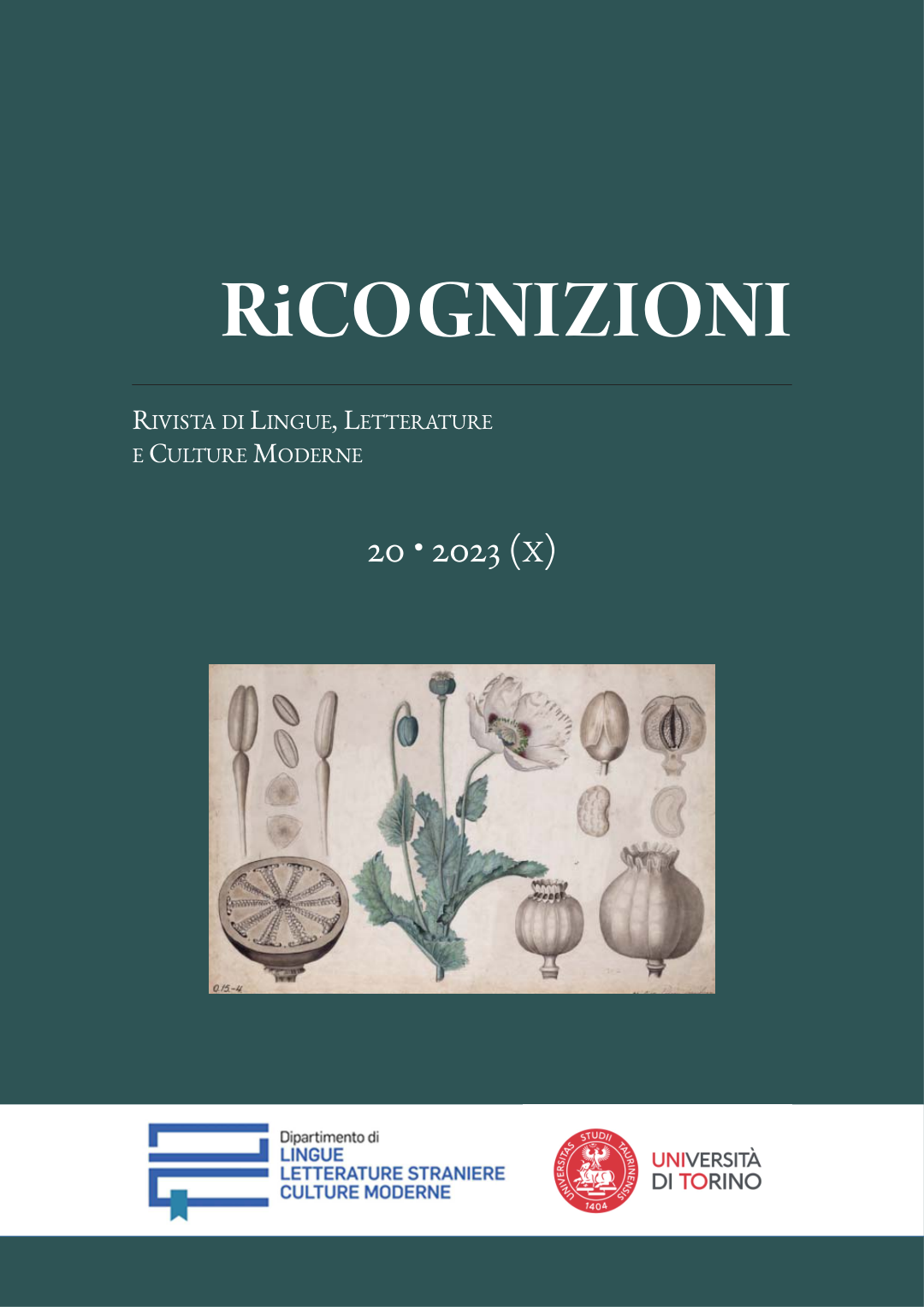The Visual-Digital Storytelling in Current Migration Narratives
Anglophone Postcolonial Literature
DOI:
https://doi.org/10.13135/2384-8987/7488Keywords:
Visual-Digital Storytelling, Chimamanda Ngozi Adichie, Reni Eddo-Lodge, Lucy Popescu, the Refugee Tales Statement, Digital EngagementAbstract
Using W. J. Thomas Mitchell’s concept of the “pictorial turn” as a starting point, this paper assesses the impact of the digital world and new media on the body of current migration narratives within the field of anglophone postcolonial literature. In a culture dominated by images, new media, particularly the Internet, have increasingly complemented written language as the primary means of conveying storytelling. In regard to migration narratives, as it happened at the dawn of cinematography when the human face attained a multidimensional, visual and emotional focus, this shift in the messenger has conferred a digital life to the human face itself. Given this new media reality, the human face is now able to communicate simultaneously across distances, across time and to a wider audience. This quality, referred to as “facialization” by Thomas Macho, enables individuals to take a predominant role as real-life protagonists in their own real-life stories engendering in return an online community. Furthermore, as put forth by Hilde C. Stephansen, this online community also takes a stand against the mainstream narrative of present-day migrations and directs attention to marginalized human beings prevented from entering Western societies. In this paper, these real-life stories are explored in the visual-digital storytelling by Chimamanda Ngozi Adichie of her experience as a migrant; by Reni Eddo-Lodge as a descendant of earlier migrants; by Lucy Popescu as an activist working for the publishing industry as well as by activists engaged in the Refugee Tales Statement. This visual-digital production of migration narratives and their consequent availability also render the human rights issues facing stateless persons pressing and immediate.
Downloads
Published
How to Cite
Issue
Section
License
RiCognizioni is published under a Creative Commons Attribution 4.0 International License.
With the licence CC-BY, authors retain the copyright, allowing anyone to download, reuse, re-print, modify, distribute and/or copy their contribution. The work must be properly attributed to its author.
It is not necessary to ask further permissions both to author or journal board.









